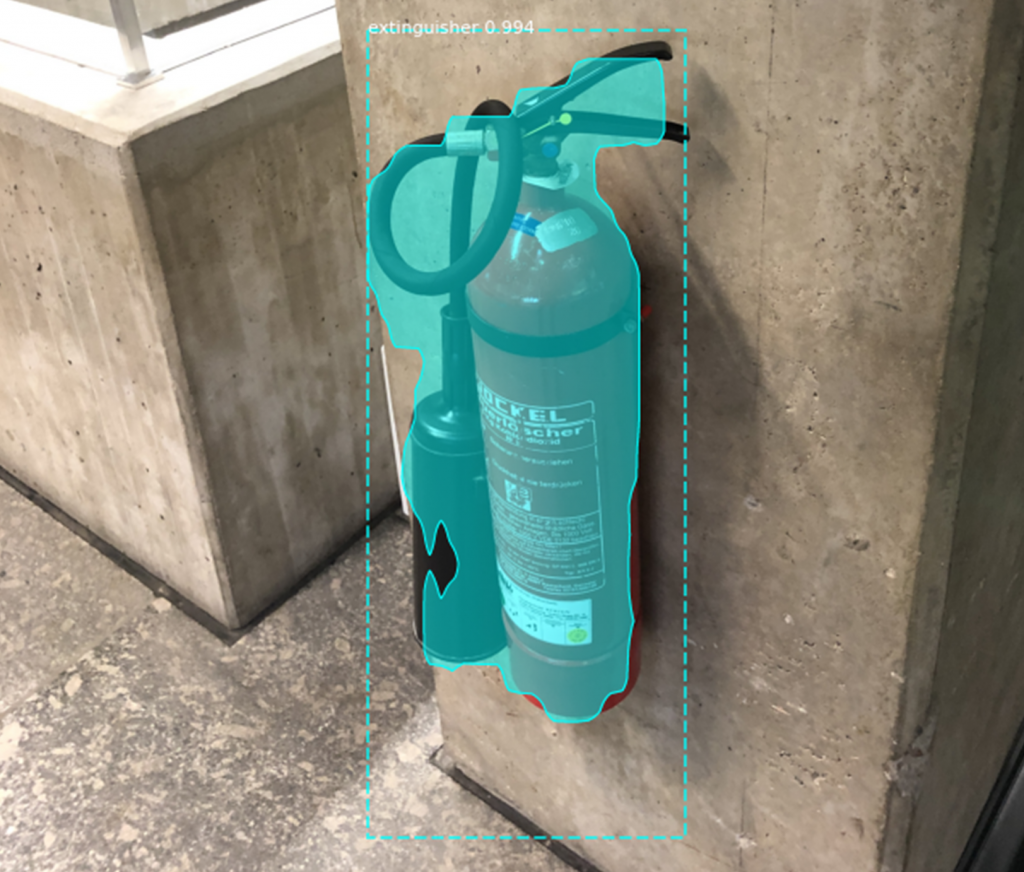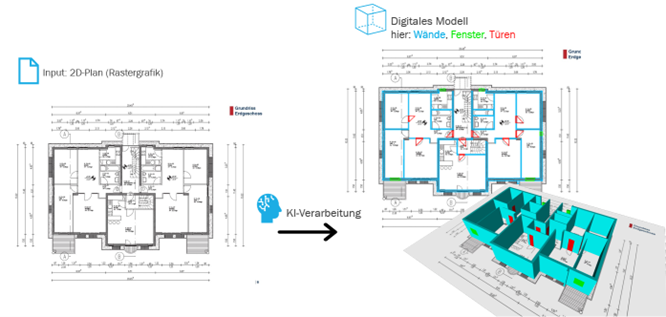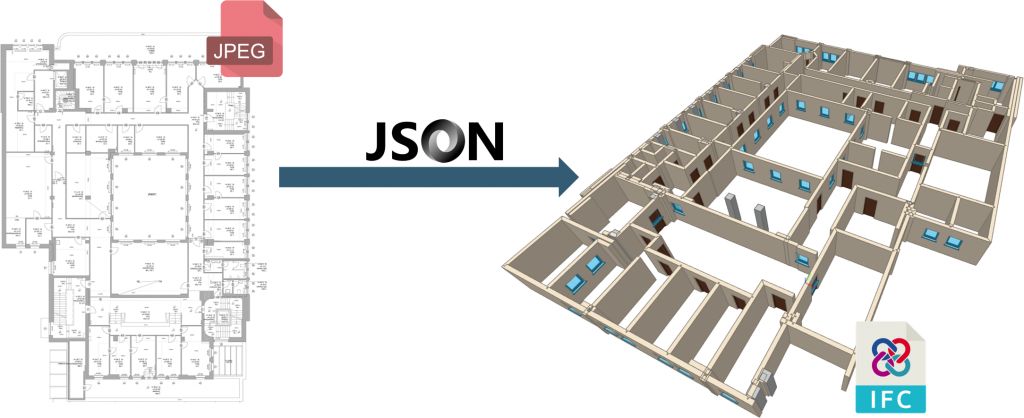The results of BIMKIT will significantly improve the quality of as-built models and speed up their creation considerably. The application focus is on the creation of as-built models for buildings for property management and for bridges for the planning of new replacement buildings, clearly presented here by the respective demonstrator.
The results provide many advantages not only for planners and operators, but also for users and facility management service providers. Specialist planners are provided with new options so that the current repetitive, time-consuming and manual creation of as-built models can be automated and more productive.
Various AI services are currently being developed in BIMKIT, which can be used to extract essential information from various types of data and transfer it into a BIM model.
The benefits of the results for building management and the maintenance management of bridges will be evaluated on the basis of several use cases, which will be implemented in two demonstrators.

Building management demonstrator
Suitable inventory models are created for the maintenance of technical building equipment (TGA) and for the optimisation of space utilisation and energy consumption. Specific AI processes for the creation of building components, rooms and technical building equipment are developed and combined. Conventional 2D plans (floor plans, elevations or schematic plans) are analysed with the help of AI processes for automatic creation. Analysing current images provides important information on the current state of the building. Specific system products and their properties are identified, which are then transferred to the as-built model on the basis of product data.
In addition, a wide range of information on the structural and technical objects can be found in documents. These texts are automatically analysed using retrieval methods in order to update individual objects. The results of the AI processes are integrated based on rules in order to consistently merge building and technical building services elements into an as-built model. The demonstrator will also show how an existing digital as-built model can be updated on the basis of images and documents. An up-to-date as-built model can efficiently guarantee operator responsibility. The AI processes are integrated into existing BIM systems on the basis of open interfaces. Thanks to the open approach of GAIA-X, existing systems from ETA and HSG can be used, trained AI processes for other building types (e.g. hospitals) and other technical facilities can be integrated and data provision can be made secure.
Demonstrator maintenance planning of bridges
Suitable as-built models must be created for efficient bridge maintenance planning. The accuracy and level of detail of the as-built models must be determined on a project-specific basis, e.g. the requirements for a new replacement structure are lower than for the repair of individual structural elements. For the demonstrator, specific AI processes are developed for the creation of building elements, structural connections and the subsoil. Point clouds and 2D plans provide information on dimensions and non-visible construction elements. The evaluation of images and texts (e.g. building books, expert reports) contain information on materials, damage to the building and the subsoil. The AI processes deliver individual results for bridge elements or bridge subsystems, which are combined with the help of expert knowledge. A secure cloud infrastructure is also necessary, as bridge structures in Germany are part of the safety-critical infrastructure and distributed data sources (e.g. SIB structures) are to be utilised.
In addition to the use of images and texts, information from federal and state road construction administration databases is integrated in order to take into account the concerns of public bodies. The AI processes are used directly in the software systems of the partners ALP and AUS for bridge modelling (e.g. Allplan Bridge, A+S KorFin) on the basis of open interfaces. The evaluation of a generated as-built model is carried out for the demolition planning of a bridge and the repair of a noise barrier on a bridge. The demonstrator thus shows how domain-specific knowledge clusters and training models of the AI processes used are utilised. It can be transferred to other infrastructure structures (e.g. tunnels, hydraulic structures).




